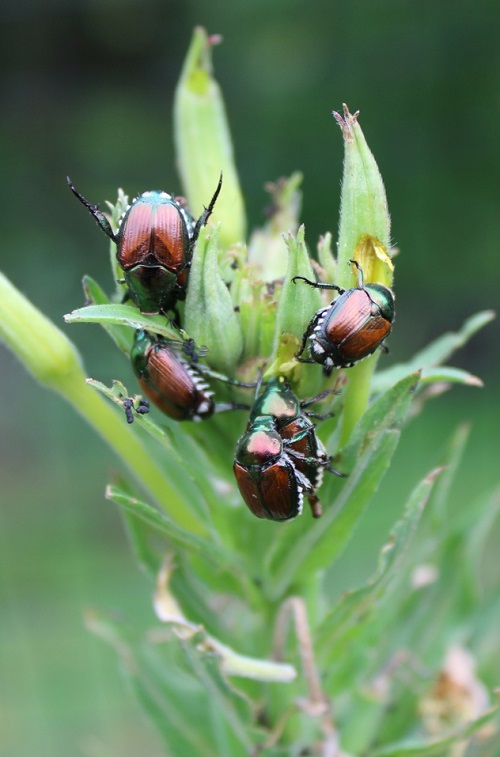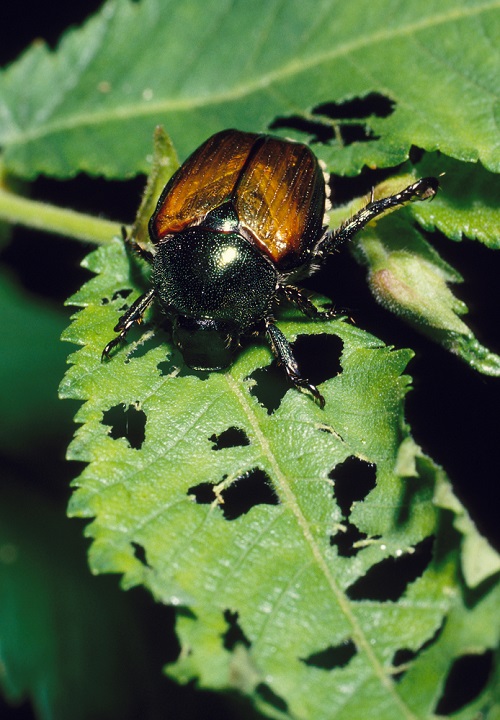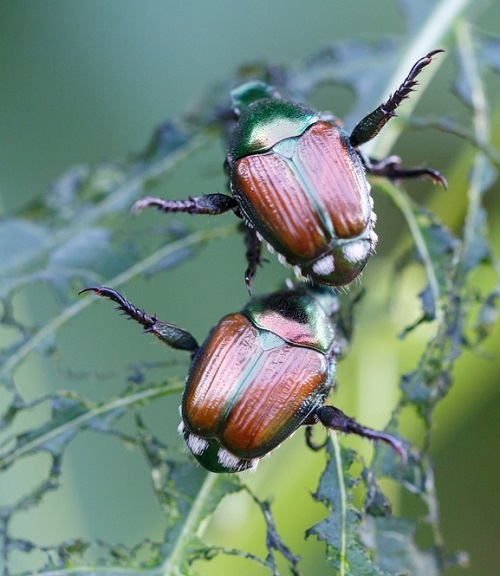After bothering you throughout the day, you might wonder, Where do these Japanese Beetles go at Night? Read on as this article unveils the answer.

Japanese beetles (Popillia japonica), those shiny pests that make unwelcome appearances in gardens and landscapes, can quickly become a gardener’s nuisance. And as the sun sets, you may find yourself wondering: Where do Japanese Beetles go at Night?
Where Do Gnats Come From? Find Out Here
How Do Japanese Beetles 🪲 Look Like?
These insects are approximately half an inch in length and feature a distinctive metallic green body. Their exoskeleton shines in the sunlight, making them easily recognizable in the garden–and if you still can’t recognize them 🥸, look around; you’ll definitely find them sucking the life out of your beloved plants.
Japanese beetles have two pairs of wings and six legs, making them typical members of the beetle family. The front cover is hard and displays a coppery hue, serving as a protective shield for the delicate wings underneath.
Where Do Japanese Beetles Go at Night?
As the day transitions into night, Japanese beetles retreat to their nighttime shelters, seeking refuge from the darkness. They create shallow nests in the soil, which are a few inches below the surface.
These nests are strategically positioned near dense foliage, which provides the insects with both shelter and sustenance and good enough time to rest for the next day’s damage to your plants.
June Bug vs Japanese Beetle: All the Differences
What Time Do Japanese Beetles Come Out?

Japanese beetles are diurnal creatures, meaning they are most active during the daytime. Their peak activity hours span from 9 am to 3 pm. During this time, they are highly active, eating various plants voraciously and causing damage to foliage.
You may ask, why do they come out in the day only? The reason behind their daytime activity lies in their preference for warm weather.
These grubs thrive when temperatures range above 50 F (10 C), ideally around 80-85 degrees Fahrenheit (26-30 degrees Celsius). This optimal temperature range coincides with their peak activity period.
What Season Are Japanese Beetles Most Active?
Japanese beetles are most active during the warmer months of late spring and well into the summer, typically from mid-June to mid-August.
This is the reason gardeners often refer to them as “summer bugs” due to their affinity for warm weather. This seasonal preference aligns with their lifecycle, as they usually only live for about two months.
17 Tiny Black Bugs that Look Like Poppy Seeds
Are Japanese Beetles Invasive?

Japanese beetles are indeed invasive pests that can wreak havoc on plants, leading to defoliation and even reduced crop yields in agricultural settings. Their feeding habits make them a significant concern for gardeners and farmers.
How to Get Rid of Japanese Beetles
One of the simplest methods to remove Japanese beetles from your plants is doing it by hand, tossing them into a jar of soapy water. But this is only possible if the infestation is not much! You can also give neem oil a try as well, which is an organic solution to deter these bugs.
Planting Japanese beetle-resistant plants alongside your vulnerable ones is another method that will help. As a last resort, you can use chemical insecticides labeled for them.

